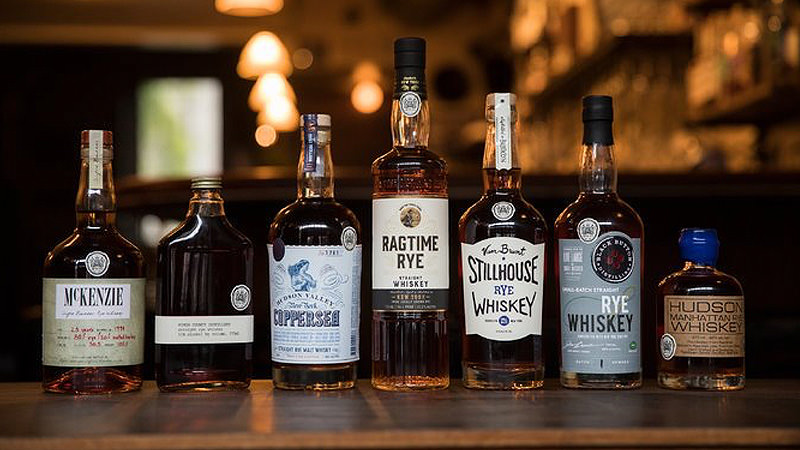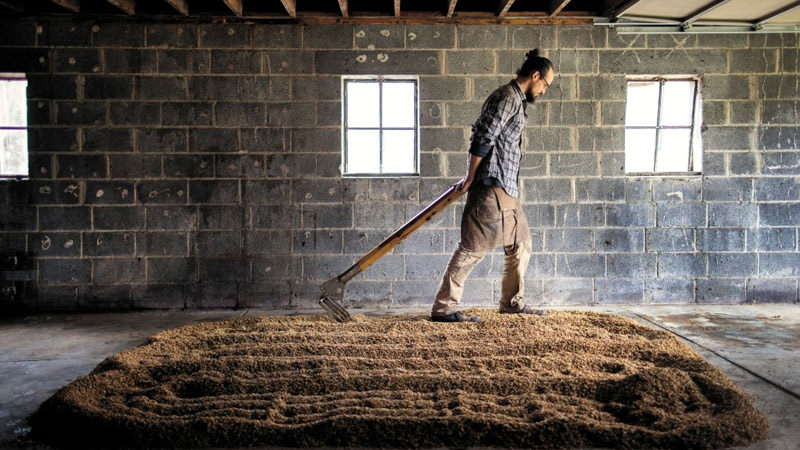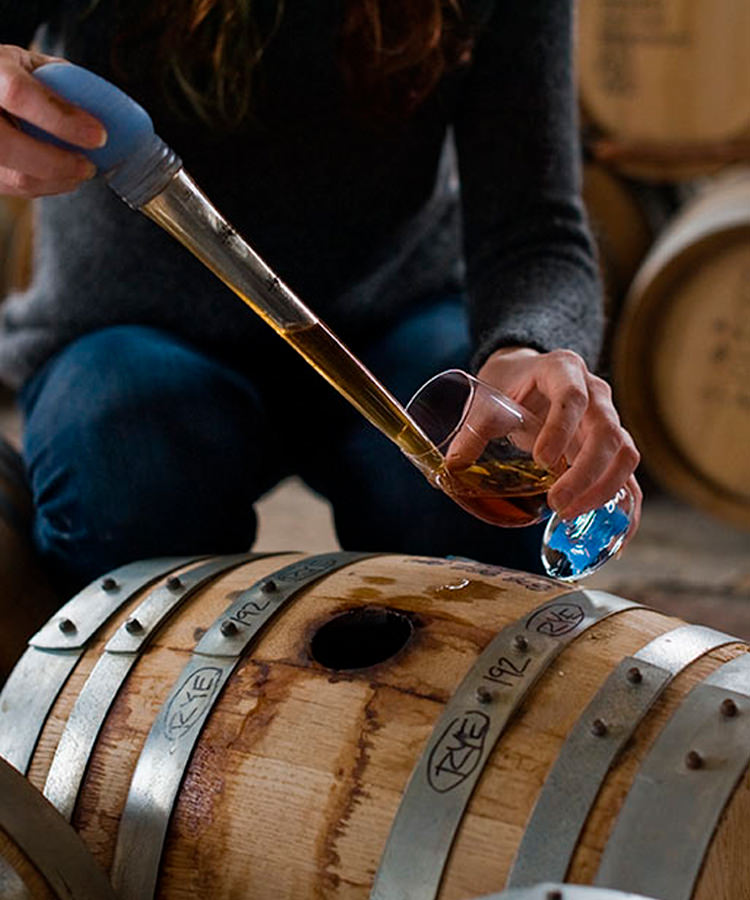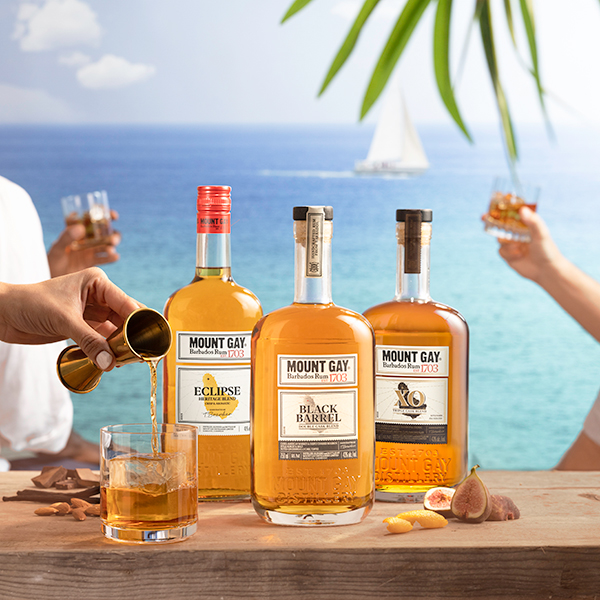It’s not enough to simply ask for a shot of whiskey anymore. As of this month, back bar standbys like bourbon, Scotch, and Tennessee and Irish whiskey will be joined by Empire Rye, a new designation launched by New York distillers in October.
To qualify as Empire Rye, the spirit must comprise 75 percent New York-grown rye distilled to no more than 160 proof, barrelled at no more than 115 proof, and aged for two years in charred, new oak barrels.
Bottles such as New York Distilling Company’s Ragtime Rye and Tuthilltown Spirits Hudson Manhattan Rye are already on shelves. Last week, New York Distilling Company launched a rye week event attended by homegrown operations like Catoctin Creek, Canadian producer Lot 40, and a sharp-suited Jack Daniel’s brand ambassador.
In other words, Empire Rye has arrived. Well, actually, it’s been here and it’s only getting better.
Why Rye

The Empire Rye category has a more pragmatic origin story than the sepia-toned idyll that surrounds American bourbon lore. In 2007, New York State decreased fees and regulations on producers using New York grain and fruit. Distillers saw this as an economic opportunity. Labels like New York Distilling Company, Kings County Distillery, Finger Lakes Distilling, and others started producing affordable, quality spirits that spoke to a specific location.
It’s no accident that they chose to work with rye. Bourbon may be America’s spirit, but rye production was established in the Northeast many years prior. It was the original grain of the region because it was hardy and grew better than corn or barley.
Until Prohibition. Rye whiskey production ceased during Prohibition and never really picked back up. A small amount of rye was used in other whiskies, but corn- and barley-based whiskey became the de facto choice for American producers. When rye was used for whiskey, it was often at lower percentages. (To be legally labeled as “rye” in the U.S., a spirit must be 51 percent rye.)
Today, thanks to this legislation and the rise of craft spirits in general, New York State has more than 100 distilleries. There are more than 1,500 distilleries nationwide, according to the Distilled Spirits Council. More than 60 percent sell at least one type of whiskey. Bourbon, for example, is produced in 48 states.
Now it’s rye’s turn. The New York Times has been writing about how “rye is having a moment” since 2014. Craft cocktail bars stock rye because many of the original pre-Prohibition recipes like the Manhattan and Sazarac call for it. Jack Daniel’s, famous for its Tennessee whisky, released a limited single-barrel rye in 2012 and began mass producing Tennessee rye earlier in 2017.
“The demand for rye has outpaced production,” Nate Dumas, a representative for Campari America, tells me at New York Distilling Company’s Wild Rumpus Rye event on Friday. He was pouring three rye expressions from Wild Turkey, one of the first major distillers to jump into rye whiskey. “The bar community found it worked well in cocktails because it’s less sweet than bourbon,” he says.
He added that while Wild Turkey has been making rye for decades, it used to be a small percentage of production. That’s no longer the case.
According to the Distilled Spirits Council, the amount of rye whiskey produced in the U.S. has more than doubled in the last five years. In 2012, just under 300,000 9-liter cases were made. In 2016, more than 775,000 were made — nearly 800 percent more than what was made in 2009.
Of course, that doesn’t mean it’s easy. Chad Robinson, who works with Catoctin Creek Distillery in Virginia, tells me that rye can mess with equipment and boil over easily. New York distillers face ample competition from corporate entities like Jim Beam, plus Canadian distillers such as Lot 40 making delicious 100-percent rye, and premium aged whiskey like the recently released Lock Stock & Barrel 18 year from Cooper Spirits Company. Other rye-producing regions could also imitate Empire Rye.

“I don’t see why it couldn’t happen in other states,” Allen Katz, the co-founder of New York Distilling Company, tells me in an email. “One of the really fun question marks is whether there will be an authentic terroir to what we are striving for, a distinctive style of New York rye whiskey. In our case we can map our specific points of topography, soil composition and grain varietal that all, we think, will have influence on Empire Rye.”
Small New York distillers, with their special prices on unique, antique New York grains and decade-plus of focused production, have an advantage on other rye producers because good whiskey takes time. The classification could help distillers in New York set themselves apart in a craft whiskey market already filled with crowd favorites and dedicated fan bases. It’s also, for now at least, distinctly New York thanks to a distiller-friendly government and established whiskey scene.
“My vision is that bars and liquor stores and the public will see this as a mark of authenticity, and that as a category Empire Rye can be mentioned in the same sentence as Kentucky bourbon, Tennessee whiskey, or Scotch,” Christopher Williams, the owner of Coppersea Distilling, told The Times. Time will tell.

